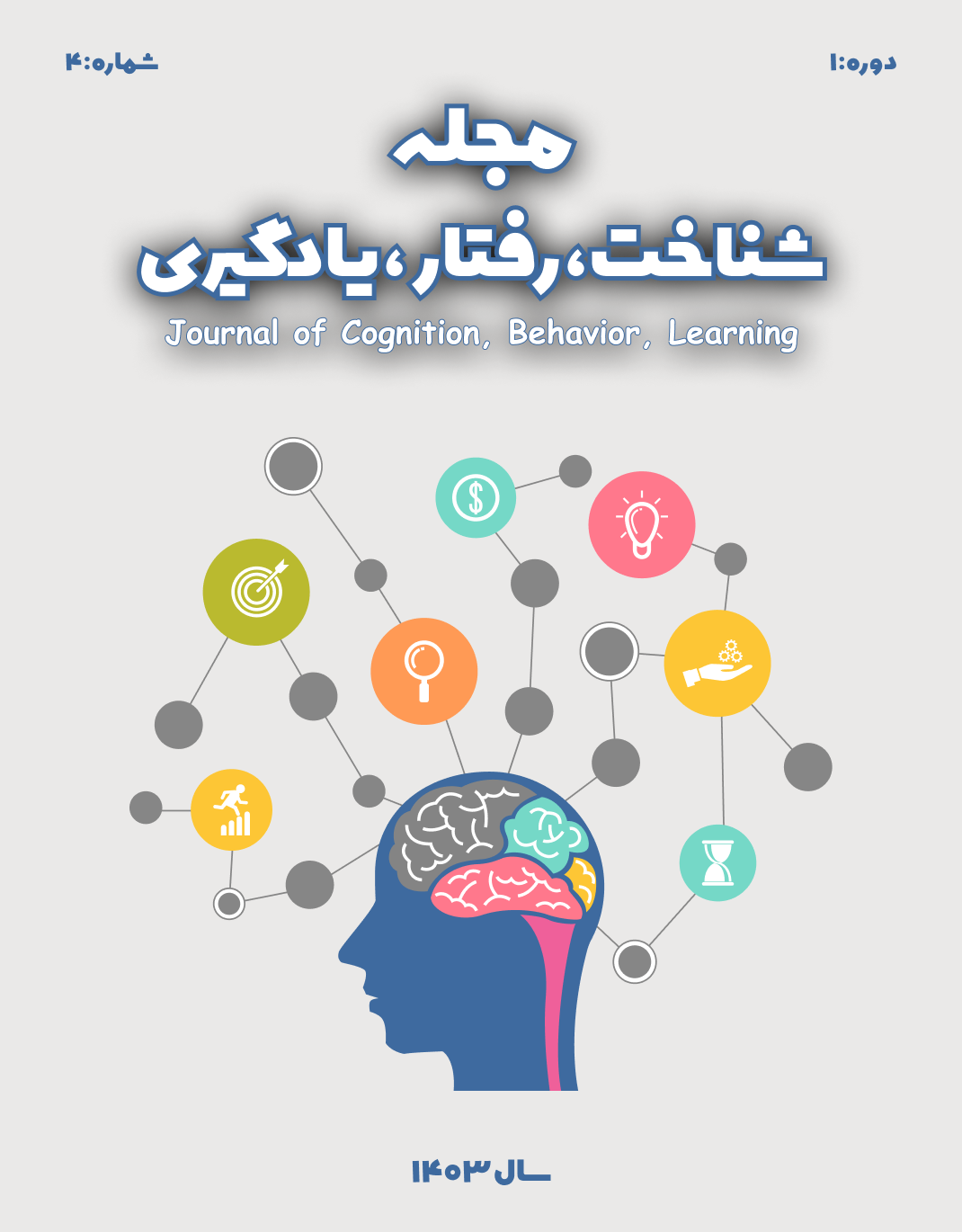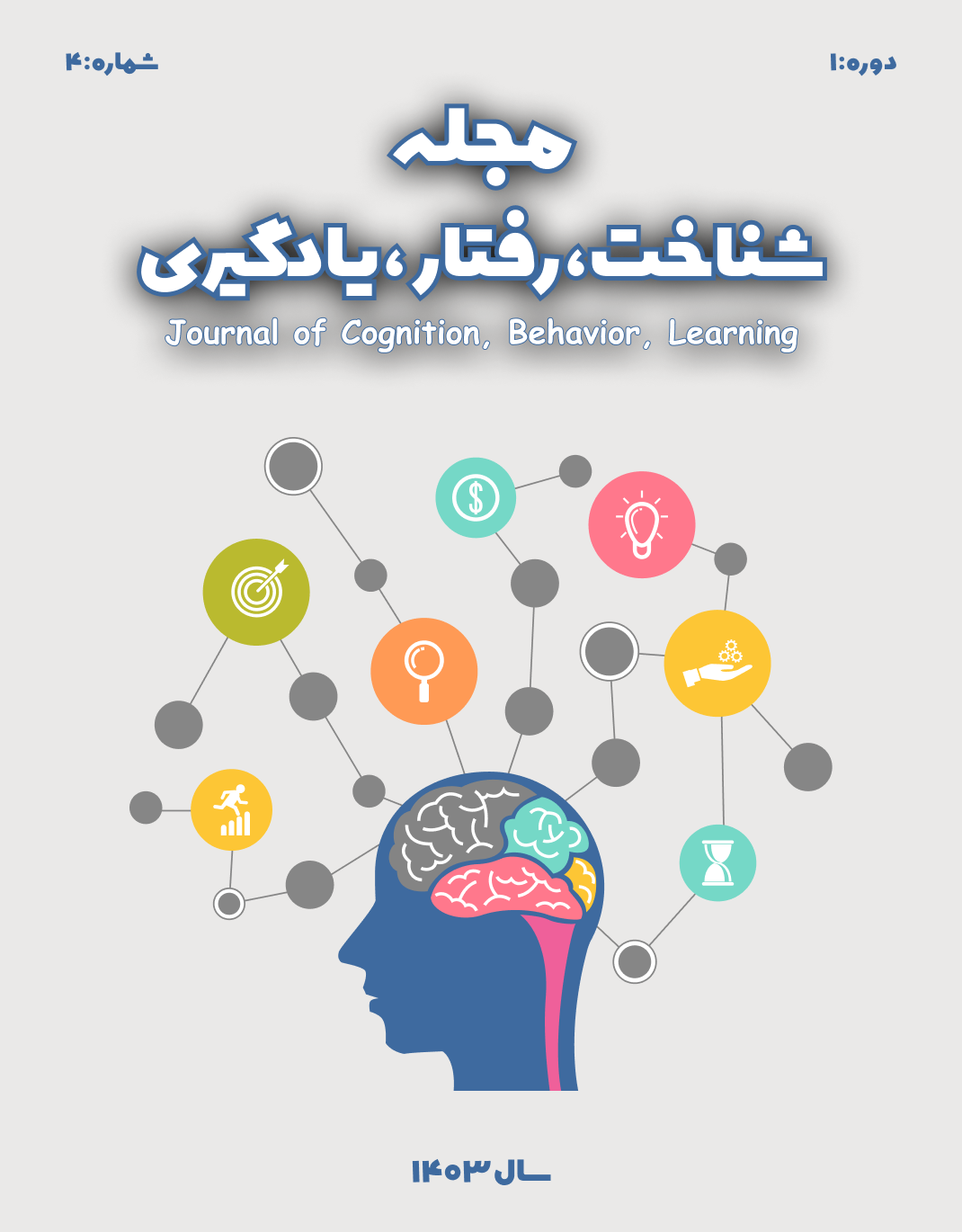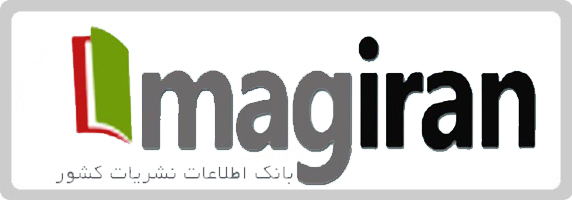شناسایی مولفههای سازنده پرورش خلاقیت دانش آموزان دوره متوسطه اول در درس جغرافیا در استان ذی قار
کلمات کلیدی:
مولفه , خلاقیت, درس جغرافیاچکیده
پژوهش حاضر با هدف شناسایی مؤلفههای سازنده پرورش خلاقیت دانشآموزان دوره متوسطه اول در درس جغرافیا انجام شده است. جامعه آماری شامل کلیه معلمان دوره متوسطه اول در شهر ذیقار به تعداد ۳۴۰ نفر بود. بر اساس جدول مورگان، ۱۸۱ نفر (۱۱۰ زن و ۷۱ مرد) بهعنوان نمونه انتخاب شدند. ابزار گردآوری دادهها، پرسشنامهای ۱۰۲ سؤالی بود که توسط پژوهشگر طراحی شد. پس از بررسیهای مقدماتی، ۹۶ سؤال مورد تأیید قرار گرفت. طراحی پرسشنامه با بهرهگیری از مصاحبهها و مرور نظریههای ملی و جهانی صورت گرفت و در نهایت برای نمونه مورد نظر ارسال شد. روایی ابزار از طریق روایی همزمان و پایایی آن با استفاده از ضریب آلفای کرونباخ محاسبه شد. برای تحلیل دادهها از روش تحلیل عاملی اکتشافی با رویکرد استخراج مؤلفههای اصلی استفاده شد. نتایج تحلیل عاملی نشان داد که مؤلفههای مؤثر در پرورش خلاقیت در درس جغرافیا شامل ۲۱ عامل اصلی هستند. این مؤلفهها عبارتاند از: مهارتهای فناورانه (۱۱.۳۰)، نگرش خانواده (۱۰.۶۲)، فرهنگ خانواده (۱۰.۵۷)، ساختار سازمانی (۱۰.۲۵)، منابع مالی (۹.۷۹)، مدیریت (۹.۳۰)، نظام آموزشی (۸.۹۲)، هدفگذاری و برنامهریزی (۸.۵۷)، محتوای آموزشی (۸.۲۵)، راهبردهای یادگیری (۷.۹۷)، آموزش خلاقیت (۷.۹۰)، ارزشیابی (۶.۸۰)، فرهنگ حمایتی (۵.۵۷)، حمایت از تفاوتها (۵.۴۳)، فرصت رشد و ابتکار عمل (۵.۳۳)، زیرساختها (۵.۰۵)، پشتیبانی فنی و تجهیزاتی (۴.۹۸)، و فضای آموزشی (۴.۸۷). در مجموع، این ۲۱ مؤلفه توانستند حدود ۷۵ درصد از واریانس کل مربوط به پرورش خلاقیت را تبیین کنند.
دانلودها
مراجع
Asadi, M., & Ahmad Abadi, A. (2023). Effective Teaching Strategies in Geography Education (Case Study: Tenth Grade Humanities). Research in Social Studies Education, 5(4), 18. https://journals.cfu.ac.ir/article_3480.html
Baghaei, H., Akbari, S., & Tolouei, L. (2023). Creativity and Innovations in Schools. First International Conference on Sociology, Social Sciences, and Education with a Future-Oriented Approach, https://civilica.com/doc/1782732/
Białkiewicz, A. (2020). Architectural competitions support student creativity. World Trans on Engng and Technol. Educ, 18(2), 157-162. http://www.wiete.com.au/journals/WTE&TE/Pages/Vol.18,%20No.2%20(2020)/13-Bialkiewicz-A.pdf
Cenberci, S. (2018). The Investigation of the Creative Thinking Tendency of Prospective Mathematics Teachers in Terms of Different Variables. Journal of Education and Training Studies, 6(9). https://doi.org/10.11114/jets.v6i9.3434
Dolatshahi, Z., & Tolebi Nejad, M. (2023). Factors and Effective Strategies in Teaching Geography. https://civilica.com/doc/1940571
Hosseini, A. A.-S., & Bozorgi, A. (2023). Educational Creativity: A Comparison of the Educational Systems of Australia, Japan, and Iran. Tehran: Jahad University Press.
Imani, H., Nokhasar Zadi, H., Asadi, M., & Shahni, S. A. (2024). Increasing Creativity and Innovation Among Students in Educational Centers. Fourth International Conference on Educational Sciences, Counseling, Psychology, and Social Sciences, https://civilica.com/doc/2208210
Jae, H. L., & Soyeon, L. (2023). Relationships between physical environments and creativity: A scoping review. Thinking Skills and CreativityVL - 48. https://doi.org/10.1016/j.tsc.2023.101276
Jafari Ramishti, M. (2023). The Impact of Creativity-Based Education on Academic Performance of Second Grade Elementary Students. Fourteenth National Conference on Management and Humanities Research in Iran, https://civilica.com/doc/1703513
Kaplan, D. E. (2019). Creativity in Education: Teaching for Creativity Development. Psychology, 10(2), 140-147. https://doi.org/10.4236/psych.2019.102012
Nemat Yaar, A., Sajad, Mirzaei, N., & Davoodi, R. (2022). Study and Examination of Factors Affecting Creativity in Secondary School Students. https://civilica.com/doc/1847541
Ranjbar, M. (2020). The Impact of Art on Teaching and Learning and the Emergence of Creativity in Students. Third International Conference on Psychology, Educational Sciences, and Social Studies, https://civilica.com/doc/1227995/
Robinson, K., & Aronica, L. (2020). Creative Schools. Tehran: Tik and Avaye Noor Publishing. https://www.amazon.co.uk/Creative-Schools-Revolutionizing-Education-Ground/dp/0241003954
Sonja, V. (2023). Development of creativity in elementary school. Journal of Creativity, 33(2), 33-48. https://doi.org/10.1016/j.yjoc.2023.100055
Soodagar, A. (2020). Examining the Impact of Teachers' Information Literacy on the Growth of Creativity Among Elementary School Students in Hamoon County. Fifth National Conference on Innovative Approaches in Education and Research, https://civilica.com/doc/1152634/
Tang, C., Mao, S. A. U. N. S. E., & Xing, Z. (2022). Improving student creativity through digital technology products: A literature review. Thinking Skills and Creativity, 44, 234-244. https://doi.org/10.1016/j.tsc.2022.101032
دانلود
چاپ شده
ارسال
بازنگری
پذیرش
شماره
نوع مقاله
مجوز
حق نشر 2024 أمجد فنجان هويدي (نویسنده); عباس خورشیدی (نویسنده مسئول); رنا غانم حامد, نرگس سعیدیان خوراسگانی (نویسنده)

این پروژه تحت مجوز بین المللی Creative Commons Attribution-NonCommercial 4.0 می باشد.






